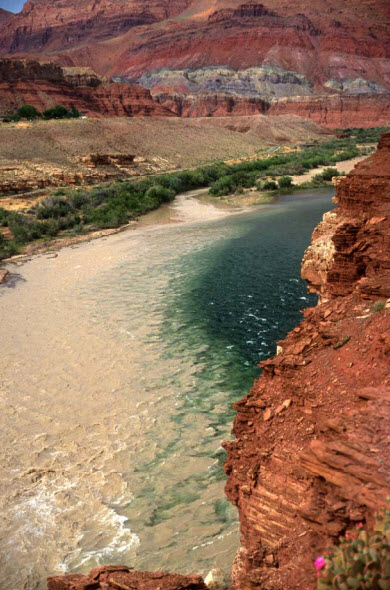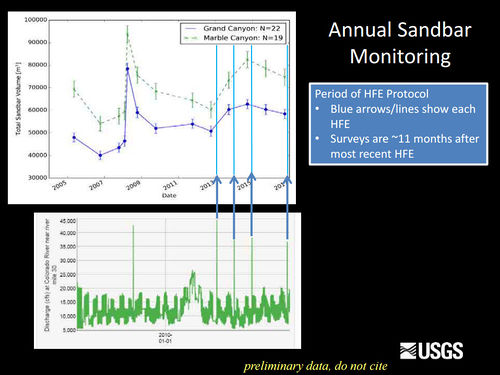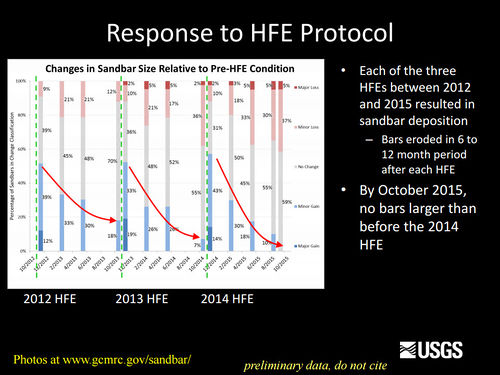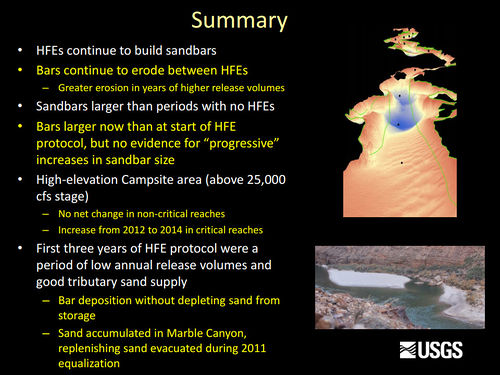|
|
| Line 140: |
Line 140: |
| | | | |
| | '''2017''' | | '''2017''' |
| − | *[[File:Chapman 2017 Thesis-Determining tributary sediment exp flood deposits Marble Canyon ColRiv.pdf| Chapman, K., 2017, Determining the tributary sediment contribution to experimental flood deposits on the Colorado River in Marble Canyon, Grand Canyon, Arizona: Flagstaff, Northern Arizona University, MS thesis]] | + | *[[Media:Chapman 2017 Thesis-Determining tributary sediment exp flood deposits Marble Canyon ColRiv.pdf| Chapman, K., 2017, Determining the tributary sediment contribution to experimental flood deposits on the Colorado River in Marble Canyon, Grand Canyon, Arizona: Flagstaff, Northern Arizona University, MS thesis]] |
| | *[https://digitalcommons.usu.edu/etd/6635 Hamill, D., 2017, Quantifying riverbed sediment using recreational-grade side scan sonar: Logan, Utah State University, MS thesis, 71 p., ] | | *[https://digitalcommons.usu.edu/etd/6635 Hamill, D., 2017, Quantifying riverbed sediment using recreational-grade side scan sonar: Logan, Utah State University, MS thesis, 71 p., ] |
| | *[http://dx.doi.org/10.1002/2017JF004302 Buscombe et al., 2017, Compositional signatures in acoustic backscatter over vegetated and unvegetated mixed sand-gravel riverbeds: Journal of Geophysical Research: Earth Surface, v. 122, no. 10, p. 1771-1793] | | *[http://dx.doi.org/10.1002/2017JF004302 Buscombe et al., 2017, Compositional signatures in acoustic backscatter over vegetated and unvegetated mixed sand-gravel riverbeds: Journal of Geophysical Research: Earth Surface, v. 122, no. 10, p. 1771-1793] |
 The Paria River flowing into the mainstem Colorado River
|
Erosion of sandbars (beaches) along the Colorado River in Grand Canyon was first reported in the early 1970s, approximately 10 years after completion of Glen Canyon Dam. Since then, scientific studies have been conducted to monitor changes in sandbars and changes in the amount of sand stored on the bed of the river. One of the outcomes of these studies has been the implementation of flow experiments intended to rebuild eroded sandbars, especially by the release of controlled floods, also called High Flow Experiments, or HFEs, from Glen Canyon Dam. The sediment and geomorphology projects at Grand Canyon Monitoring and Research Center include the collection and processing of data to provide information needed to conduct controlled floods and to evaluate the outcome of each controlled flood and the long-term effects of controlled floods and normal dam operations on sediment-related resources. [1]
Beginning in 1998, recreational campsite area has also been measured on a subset of the sandbar monitoring sites. Campsite areas are defined as areas that are flat (less than 8 degree slope), smooth (not rocky), and clear of dense vegetation. Monitoring data show that vegetation expansion and sandbar erosion/deposition contribute to reductions in campsite area.
Increase and retain fine sediment volume, area, and distribution in
the Glen, Marble, and Grand Canyon reaches above the elevation of the
average base flow for ecological, cultural, and recreational purposes.
High elevation open riparian sediment deposits along the Colorado River in sufficient volume, area, and distribution so as to provide habitat to sustain native biota and desired ecosystem processes
• Nearshore habitats for native fish
• Marsh and riparian habitat for fish (food chain maintenance)
• Cultural resource preservation
• Maintenance of camping beaches
|
|
|
Links and Information
|
|
|
|
|
|
|
Sediment Gages
|
|
|
Sand Mass Balance Reaches in Grand Canyon
|
|
|
Presentations and Papers
|
|
2017
- Chapman, K., 2017, Determining the tributary sediment contribution to experimental flood deposits on the Colorado River in Marble Canyon, Grand Canyon, Arizona: Flagstaff, Northern Arizona University, MS thesis
- Hamill, D., 2017, Quantifying riverbed sediment using recreational-grade side scan sonar: Logan, Utah State University, MS thesis, 71 p.,
- Buscombe et al., 2017, Compositional signatures in acoustic backscatter over vegetated and unvegetated mixed sand-gravel riverbeds: Journal of Geophysical Research: Earth Surface, v. 122, no. 10, p. 1771-1793
- Griffiths and Topping, 2017, Importance of measuring discharge and sediment transport in lesser tributaries when closing sediment budgets: Geomorphology, v. 296, p. 59-73
- Kaplinski et al. 2017. Channel mapping river miles 29–62 of the Colorado River in Grand Canyon National Park, Arizona, May 2009: U.S. Geological Survey Open-File Report 2017–1030, 35 p
- Project 1: Streamflow, Water Quality, Sediment Transport, and Sand Budgets in the Colorado River Ecosystem
- Project 2: Hydrologic Change and the Geomorphic Transformation of the Little Colorado River: Implications for Sediment Delivery to the Grand Canyon
- Sandbars and Sediment Storage in Marble and Grand Canyons: Response to Recent High-flow Experiments and Long-term Trends
2016
- Topping et al. 2016. Long-term continuous acoustical suspended-sediment measurements in rivers — Theory, application, bias, and error: U.S. Geological Survey Professional Paper 1823, 98 p.
- Voichick et al. 2016. Water clarity of the Colorado River—Implications for food webs and fish communities: U.S. Geological Survey Fact Sheet 2016–3053, 4 p.
- Sandbar Modeling Project Update
- Status of Sediment Resources – August 2016
- Grand Canyon Monitoring and Research Center Science Updates and PPT (BO Compliance, Trout Updates, Green Sunfish, Fisheries PEP, Partners in Science)
- Observations of sand dune migration on the Colorado River in Grand Canyon using high-resolution multibeam bathymetry
- Project 2: Streamflow, Water Quality, Sediment Transport, and Sand Budgets in the Colorado River Ecosystem
- Sandbars and Sediment Storage in Marble and Grand Canyons: Response to Recent high-flow Experiments and Long-Term Trends
2015
- Grams et al. 2015. Building Sandbars in the Grand Canyon, EOS, Trans. Am. Geophys. Union, 96(11), 12–16.
- Alvarez. 2015. Turbulence, Sediment Transport, Erosion, and Sandbar Beach Failure Processes in Grand Canyon. Ph.D. Dissertation, Arizona State University, Tempe, AZ, 176pp.
- GCMRC Science Update - Sediment
- GCMRC Science Update - Sediment
- Updates on 2014 HFE, Paria sediment inputs, and sediment mass balance
- Glen Canyon Tailwater Fishery “Integrating Fish and Channel Mapping
- GCMRC’s Online Mapping and GIS Resources
- Streamflow, Water Quality, and Sediment Transport in the Colorado River Ecosystem
- Sandbars and Sediment Storage in Marble and Grand Canyons: Response to Recent High-flow Experiments and Long-term Trends
- Glen Canyon Tailwater Fishery “Integrating Fish and Channel Mapping
- GCMRC’s Online Mapping and GIS Resources
2014
2013
2012
2011
2010
2003
1988
|
Other Stuff
|
|
Question: What is the difference between the turbidity units NTU, FNU, FTU, and FAU? What is a JTU?
Summary: Turbidity units NTU, FNU, FTU, FAU, and JTU
Answer:
- NTU stands for Nephelometric Turbidity Unit and signifies that the instrument is measuring scattered light from the sample at a 90-degree angle from the incident light.
- FNU stands for Formazin Nephelometric Units and also signifies that the instrument is measuring scattered light from the sample at a 90-degree angle from the incident light. FNU is most often used when referencing the ISO 7027 (European) turbidity method.
- NTU is most often used when referencing the USEPA Method 180.1 or Standard Methods For the Examination of Water and Wastewater.
- When formazin was initially adopted as the primary reference standard for turbidity, units of FTU or Formazin Turbidity Units were used. These units, however, do not specify how the instrument measures the sample.
FAU or Formazin Attenuation Units signify that the instrument is measuring the decrease in transmitted light through the sample at an angle of 180 degrees to the incident light. This type of measurement is often made in a spectrophotometer or colorimeter and is not considered a valid turbidity measurement by most regulatory agencies.
A JTU or Jackson Turbidity Unit is a historical unit used when measurements were made visually using a Jackson Candle Turbidimeter. Water was poured into a tube until a flame underneath the tube could no longer be distinguished.
The turbidity units NTU, FNU, FTU, AND FAU are all based on calibrations using the same formazin primary standards. Therefore when a formazin standard is measured, the value for each of these units will be the same, however the value on samples may differ significantly.
Flash Flood videos
|
|



